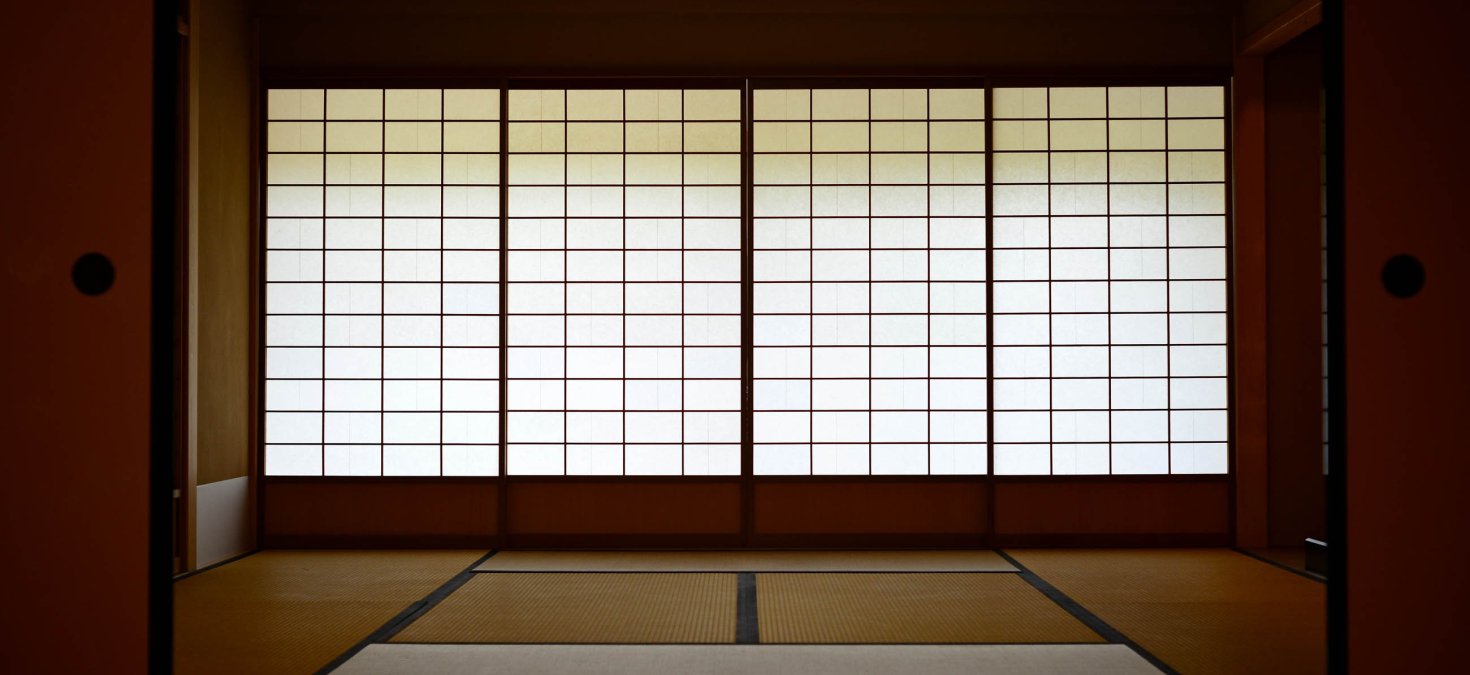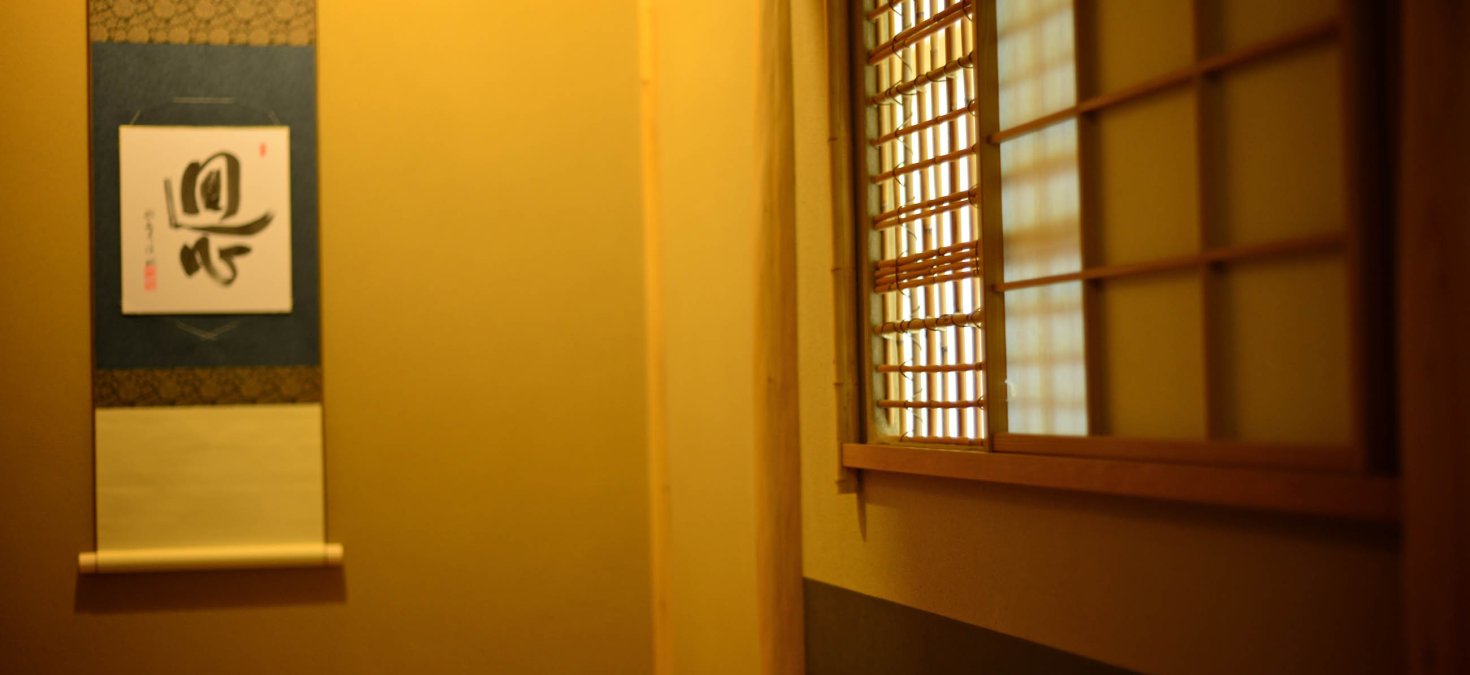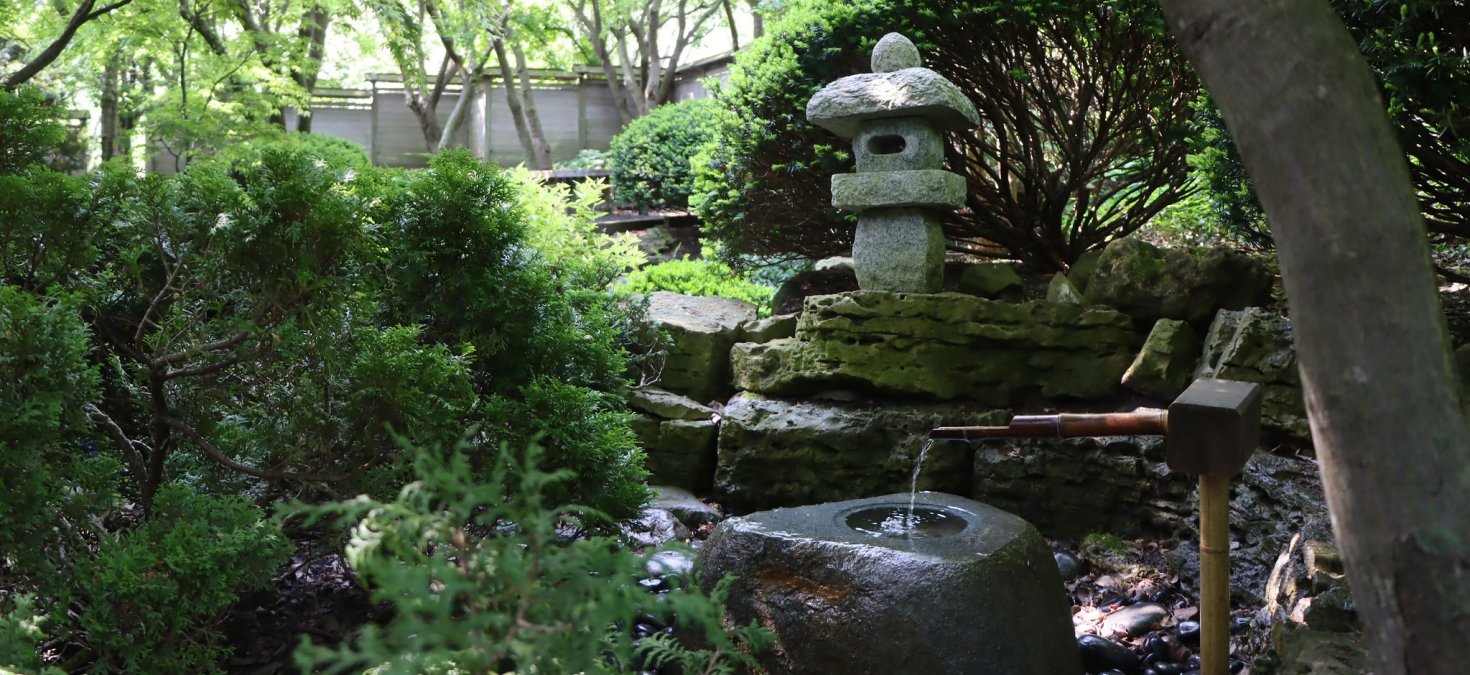The Tea Rooms (chashitsu)

The tea ceremony, and the Way of Tea, is at the very heart of Japan House's teachings. There are three tea rooms in Japan House. They were built by Japanese Master Carpenter, Seiji Suzuki, and were gifts of the Urasenke Foundation in Japan. They represent three different styles of tea rooms.
A Japanese tea room is a room built specifically to use for sharing the Way of Tea. Tea rooms are sometimes inside buildings, such as at Japan House, at other times they are small separate buildings. The size of tea rooms is measured in tatami mats. Generally the smallest tea room is 4-1/2 mats. The two large tea rooms in Japan House are 8 and 10 mats, respectively. Each tea room has two spaces, the room for sharing the tea with guests, and a small area, or mizyua, where the tea and sweets are actually prepared.

Other features of the tea room include a garden outside, with a path that has a waiting bench and a tsukubai, or stone water basin. The guest sits on the bench and then refresh themselves at the tsukubai, as if to wash their worldly cares goodbye. The tea room is bare of furniture and the guests kneel on the floor. There will be a tokonoma, or alcove, in which a scroll of calligraphy is displayed, as well as a small simple chabana, or flower arrangement.
Tsukubai in the inner garden

Although alike at first glance, the three tea rooms are actually all different; the 4-1/2 mat room is informal; the 8 mat room is semi-formal; and the 10 mat room is formal. The differences can be seen in the finishing of the woodwork, in particular the tokobashira, or pillar along the tokonoma alcove. The formal will be smooth and straight grained, while the other have different levels of natural appearance of the original tree.